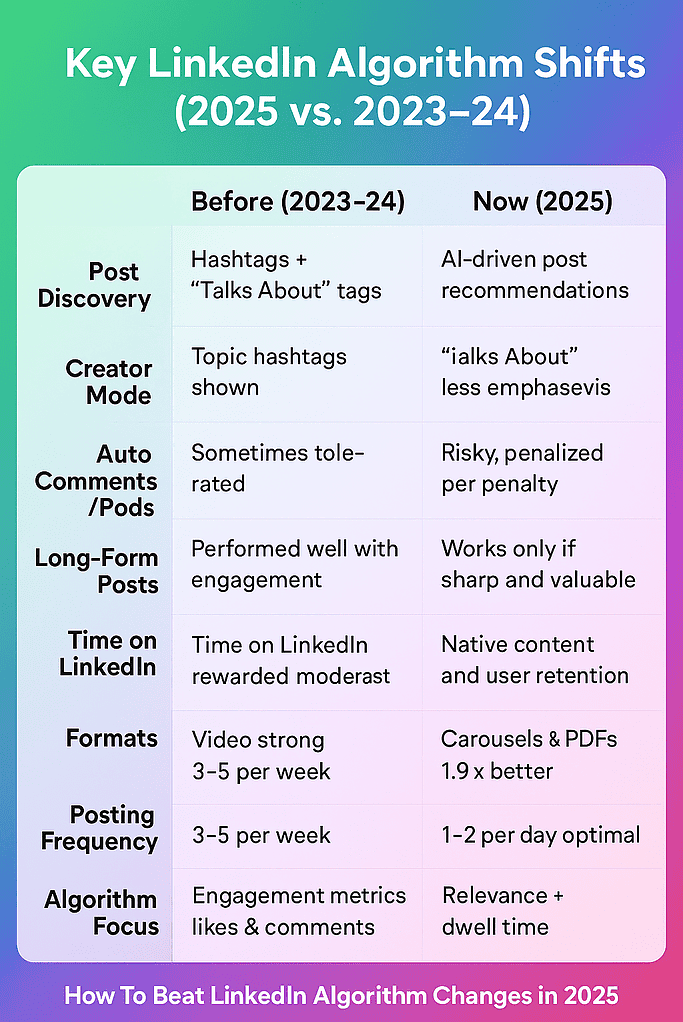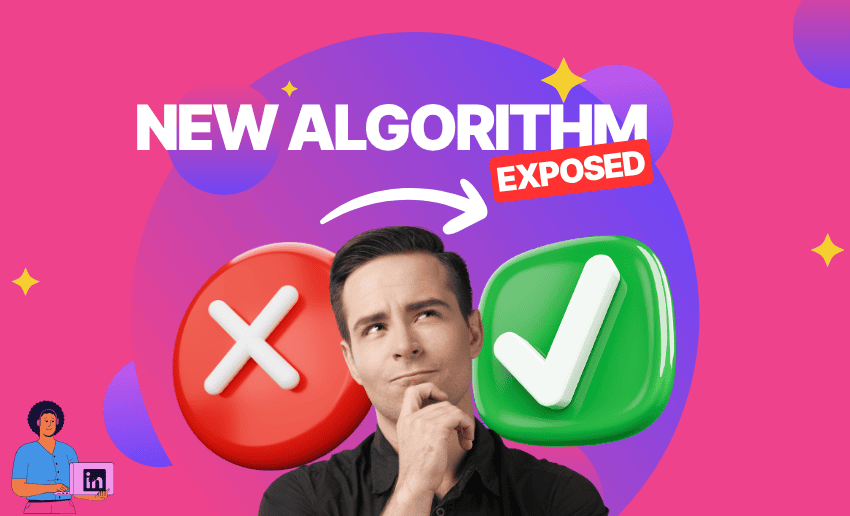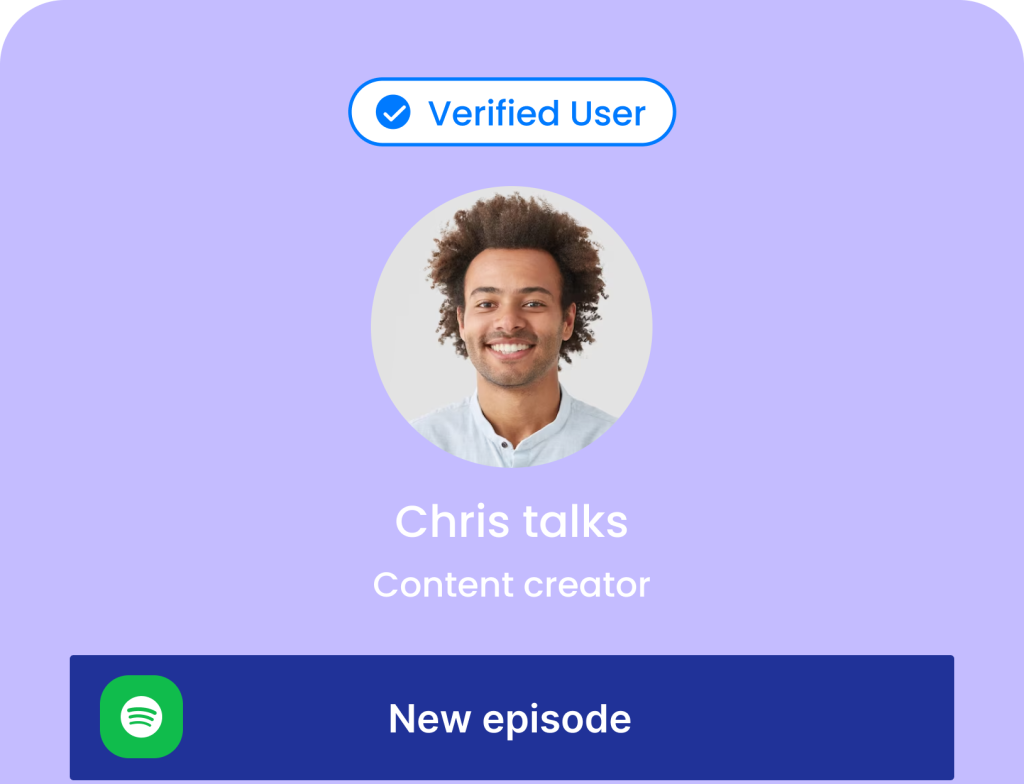Creators, brands, business and professionals go to LinkedIn to build authority, grow their network, and generate real opportunities. Unlike other mainstream social media platforms that focus more on entertainment, LinkedIn is built around professional growth, thought leadership, and meaningful conversations.
This is why it has become the go-to place for brands, entrepreneurs, and career-driven individuals who want to showcase expertise and connect with the right audience. However, just like any other platform, LinkedIn is constantly updating how its content is ranked and shown to users. These LinkedIn algorithm changes directly affect reach, visibility, and engagement.
The latest LinkedIn algorithm changes now prioritize knowledge-rich content, relevant insights, and niche-specific conversations over generic or clickbait-style posts. For creators and businesses, this means adapting quickly to avoid losing visibility. In this article, you’ll learn exactly how to beat LinkedIn algorithm changes so you can continue driving both engagement and conversions.
Understanding the LinkedIn algorithm
To get the best results on LinkedIn, it’s important to first understand how its algorithm works. The LinkedIn algorithm decides what content shows up in your feed and how many people see your posts. It does this by prioritizing several metrics to rank your content as well as those you see on your feed. The more value and interest your content brings, the higher LinkedIn pushes it.
User interaction also plays a huge role in this process. When people like, comment, share, or repost your content, it signals to the algorithm that your post is worth showing to more people. Even actions like clicking on your profile after reading a post or watching a video until the end count as positive engagement.
Key recent LinkedIn algorithm changes you should know
The LinkedIn feed is always evolving, and the latest changes are reshaping how content gets ranked and discovered. Understanding these updates is the first step if you want to beat the LinkedIn algorithm and keep your posts visible, engaging, and conversion-driven.

Here are the major LinkedIn algorithm changes to know:
1. Emphasis on expertise and knowledge sharing
LinkedIn now tilts in favor of content that shows real insight, original thinking, or professional know-how rather than generic motivational quotes or surface-level posts. The platform tries to reward authors who consistently deliver value in their niche.
How this affects you:
- Your content is more likely to be surfaced if it’s clearly tied to your domain of expertise, not random content.
- Readers are more likely to comment or share when they feel they’re learning something specific, which then feeds into better distribution.
- When your content highlights your competence, people who find you credible are likely to take action.
To beat the LinkedIn algorithm changes, you must position yourself as an authority in your niche, not spread yourself too thin.
2. Focus on passive dwell time
Passive dwell time refers to how long users spend viewing your content including reading posts, scrolling through carousels, watching videos even if they don’t immediately like or comment. LinkedIn monitors that and uses it to judge how engaging your content is.
Impact on performance:
- Posts that hold attention get rewarded more. Even if someone doesn’t immediately react, spending time on your content sends a signal.
- Content designed to make people pause such as questions, layered posts, carousels has better chances to encourage interaction later.
- If readers spend more time with your content, they are more familiar with your message, making follow-up actions easier.
To beat the LinkedIn algorithm, don’t just chase likes, build content that keeps eyes on the screen.
3. Quality over quantity for comments
In recent updates, LinkedIn gives more weight to meaningful conversations and less to shallow reactions. A back-and-forth dialogue, a detailed comment, or a discussion thread counts more than a dozen one-word replies.
Effects you’ll see:
- Posts that spark discussion are promoted more broadly.
- Encourage open-ended questions so your audience is more likely to respond thoughtfully.
- Conversations nurture trust, which helps when you want people to act.
Using automated tools or comment pods (groups that agree to comment on each other’s content) is now riskier. With the latest LinkedIn algorithm changes, inauthentic or artificially boosted engagement can be flagged, causing the algorithm to limit reach or visibility.
If your content just asks “Like if you agree,” that’s less powerful under LinkedIn’s algorithm changes. To beat the algorithm, encourage dialogue instead.
4. Shift from engagement to relevance
LinkedIn is now more cautious about engagement bait. Instead, the algorithm prefers posts that are genuinely relevant to readers’ interests, professions, or networks.
How this shift changes things:
- Posts that align well with what your audience cares about are more likely to appear in their feed.
- When readers feel the content is relevant to them, they’re more likely to respond.
- Relevance builds trust; people are more inclined to act when the content speaks to their needs.
So in your strategy to beat LinkedIn algorithm changes, make sure your content is not just “engaging” but deeply relevant to your audience.
5. First-degree connection priority
LinkedIn now tends to favor showing your posts first to your direct (first-degree) connections before expanding to the broader network.
What this means for you:
- Your immediate network becomes your first proving ground. If your first-degree connections interact, LinkedIn may push your post further.
- Tailor content to resonate strongly with your direct audience as those people are more likely to engage.
- If your core network is closely aligned with your business or persona, their interactions pave the way for conversions. In order words, they help validate you to a larger audience.
To beat the LinkedIn algorithm, concentrate on nurturing strong relationships with your first-degree network, because that’s your launchpad.
6. Video and carousel content changes
Visual formats like videos and carousel posts still carry weight, but the twist is that they must now deliver real value, not just flashy design. The algorithm rewards visual content that educates, tells a story, or piques curiosity, not just filler visuals.
How this impacts your content:
- If your visuals are engaging and retain attention, LinkedIn will promote them more.
- Carousels allow sequential storytelling and keep users swiping; videos get higher dwell time.
- Well-constructed visual narratives can lead your audience toward a call to action more smoothly.
To beat the new update on LinkedIn, use visuals not for show but to deepen understanding. Each slide or frame should be useful.
7. Keep Users in the Native Feed
LinkedIn increasingly favors posts that keep readers within its platform. Native formats like text, documents, carousels, and PDFs tend to perform better, while posts containing outbound links may see reach reduced.
The platform’s algorithm is built to reward content that retains users rather than sending them away. To navigate this, put important links in the comments or redirect only after initial native engagement.
8. Hashtags fade, AI-driven discovery gains ground
The influence of hashtags on organic reach is diminishing under the latest LinkedIn algorithm changes. LinkedIn has scaled back the “Talks About” topic tags in Creator Mode and no longer gives heavy weight to hashtag-based discovery.
While you can still use 3 to 5 niche hashtags for clarity and searchability, they no longer hold strong sway in feed ranking. Instead, AI and context-based recommendations are becoming central to how the platform surfaces content. This shift means you must rely more on relevance, topic expertise, and reader behavior than on tagging tricks to beat the LinkedIn algorithm.
How to beat LinkedIn algorithm changes
Adapting to the latest LinkedIn algorithm changes is the key to keeping your content visible and impactful. It’s no longer enough to post randomly as you need strategies that align with how the platform now rewards relevance, quality, and genuine interaction.
To help creators adjust, here are practical ways to beat the LinkedIn algorithm and keep driving both engagement and conversions:
1. Post high-value content consistently
To beat the new changes, creators need to deliver real value, repeatedly not just occasional inspiration or vague ideas. Focus on sharing deep insights within your niche: case studies, industry data, lessons from your own experience, or fresh perspectives on a trend.
Over time, LinkedIn will start seeing you as a subject-matter expert, which boosts your reach under the newest algorithm changes. Regular posting helps maintain momentum and trains your audience to expect quality from you, which improves visibility and conversion.
2. Focus on quality engagement
Under LinkedIn’s algorithm changes, the system now favors meaningful comments and conversations over dozens of shallow reactions. So instead of aiming for hundreds of likes, craft posts that invite thoughtful responses. This can include you asking questions like “What’s your biggest challenge with X?” rather than “Agree if you like this”.
Also, creators must learn to reply to comments as each reply keeps the discussion active which signals relevance, and encourages more people to join in. This deeper engagement helps your post stay visible longer and builds trust, which leads to higher conversion.
3. Leverage LinkedIn features
LinkedIn gives special weight to native features like polls, carousels, newsletters, live events, and document uploads tend to perform better than plain external links. Use carousels or documents to guide your audience step by step, or host live Q&A sessions to spark real-time interaction.
Newsletters help build a loyal readership. By tapping these features, you align with the LinkedIn algorithm changes and get more push from the system itself.
4. Timing and frequency optimization
Even the best content fails if posted when your audience is dormant. Use analytics to identify when your network is most active. This will vary from niche to niche but a general assumption is often midweek mornings or lunch hours.
Posting during those windows gives your content a stronger “first hour” performance, which the algorithm watches closely. Also, consistency matters: posting 2–4 times per week is usually more effective than flooding and then disappearing. Tools like LinkedIn’s schedule or third-party post schedulers help you stay consistent without overwhelming your audience.
5. Build stronger connections
To beat the LinkedIn algorithm, you can’t just broadcast, you need network depth. Connect strategically with people in your field, engage with their content (not just a “like”), and establish genuine relationships. The algorithm favors content circulated among strong first-degree connections before expanding to others. When your immediate network interacts, your posts get boosted to wider circles. Over time, these meaningful connections become your best amplifiers.
6. Avoid engagement bait and spam tactics
LinkedIn’s smarter now as phrases like “Comment YES if you agree” or “Tag 3 friends” are deprioritized under the recent LinkedIn algorithm changes. These feel manipulative and offer low value.
Instead, your goal should be to offer something worthwhile and invite conversation naturally. Be authentic. Let the content do the pulling, not gimmicks. This approach is safer, more sustainable, and helps you genuinely beat the LinkedIn algorithm over time.
Finally
The LinkedIn algorithm is always evolving, and every update reshapes how content performs on the platform. Rather than worry about the changes, the real key is learning to adapt quickly and smartly.
The latest LinkedIn algorithm changes may favor clarity, relevance, and meaningful engagement, but these shifts also create new opportunities for professionals and businesses. With the right strategy, you can beat the LinkedIn algorithm, stay visible to your audience, and build lasting influence in your industry.








